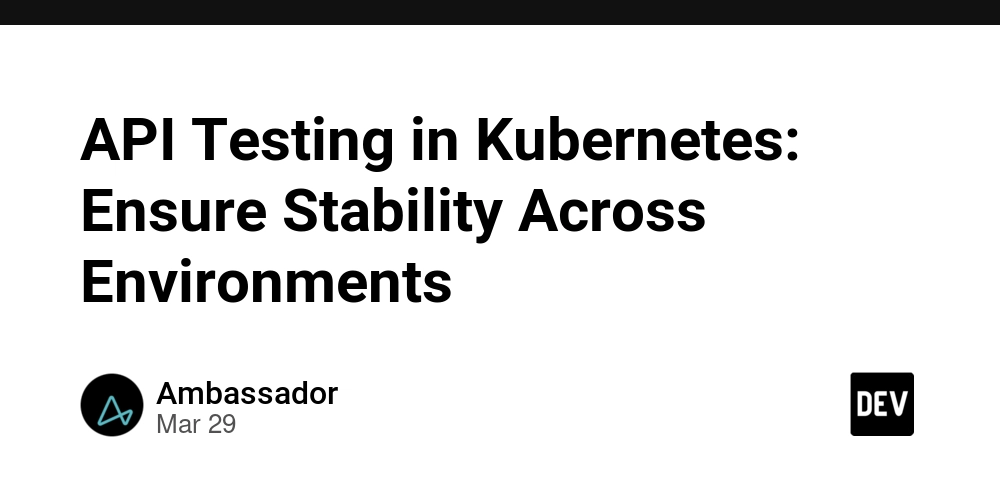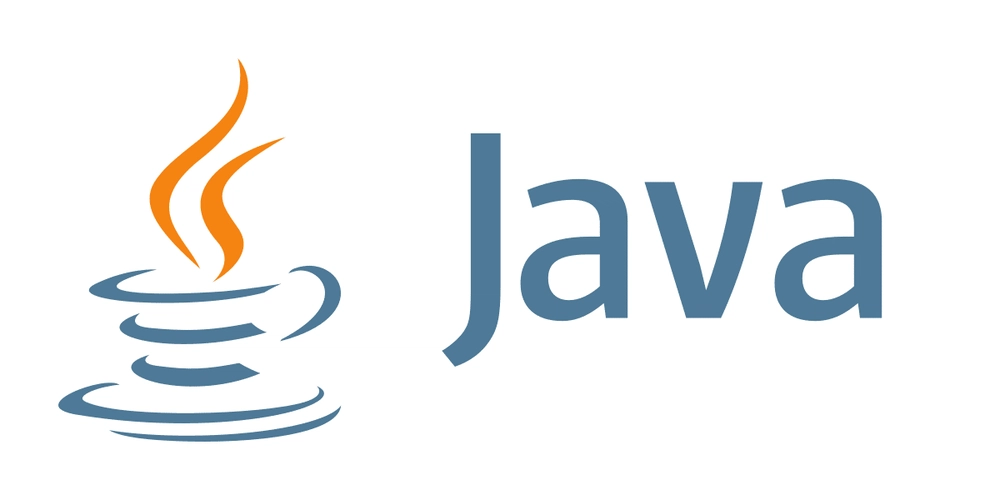API Testing in Kubernetes: Ensure Stability Across Environments
Ensuring the reliability and performance of APIs deployed on Kubernetes clusters is essential for API development. With applications increasingly relying on dynamic infrastructures and microservices, robust API testing has become a critical component of maintaining a healthy and efficient development lifecycle. Let’s dive into why API testing is crucial in Kubernetes-based applications, how to set up and run tests inside Kubernetes, and the best practices for ensuring seamless integration with your existing CI CD pipelines. Why API Testing Is Critical in Kubernetes-Based Applications Kubernetes has revolutionized the way we deploy and manage applications, making it possible to scale services effortlessly. However, this test environment can also make testing quite complex. API testing in Kubernetes isn’t just about verifying that endpoints return the expected status code. It’s about validating the entire communication flow between the API server and the underlying services. Kubernetes’s distributed nature means your testing framework needs to account for factors such as ephemeral resources, parallel test executions, and variations in network latency. Accounting for these factors is important as it ensures your API endpoints behave correctly and helps mitigate any risks that come with rolling updates, autoscaling, and service discovery. You need to run tests that simulate real-world usage, such as checking response times, data integrity, and security. With the information from these tests, you can refine your API development process, making it more efficient and increasing its quality. Setting Up API Testing in Kubernetes Setting up API testing in Kubernetes involves more than just deploying a testing tool into your environment. The first step in enhancing your Kubernetes clusters is to select a testing framework that can integrate with them seamlessly. Traditionally, you would create test runners packaged as Docker containers to handle test execution within the cluster. However, this process can become cumbersome when you need to maintain consistency across multiple environments. A modern approach is to use Kubernetes-native tools that simplify the integration of your API tests directly within the Kubernetes API ecosystem. Kubernetes-native tools such as Blackbird allow you to trigger test execution via the command line and provide detailed logs, making it easier to monitor test results and diagnose issues. This setup streamlines your test execution and supports parallel testing scenarios, which are essential when running tests across multiple Kubernetes clusters. Running API Tests Inside Kubernetes Running your API tests inside Kubernetes offers several advantages, including improved connectivity and more accurate simulation of your production environment. By executing tests directly within the cluster, you bypass many of the networking issues associated with external test runners. You ensure your API server and related services are tested under conditions that closely mimic real deployment scenarios. When you trigger a test using an integrated Kubernetes-native tool, it orchestrates the test execution, logs every step, and provides immediate feedback on the status code and any errors encountered. This seamless integration is especially beneficial for running tests on multiple API endpoints concurrently, allowing you to perform parallel tests that can significantly reduce the overall test execution time. The insights gained from these tests help pinpoint issues related to the Kubernetes API, ensuring that all components interact correctly under load and during scaling events. Automated API Testing Tools like Blackbird play a significant role in creating detailed test scenarios. Postman allows you to create tests that validate status codes and response times. Blackbird offers additional capabilities for conducting and monitoring API tests in Kubernetes. You can import Postman collections into Blackbird to leverage the strengths of both platforms–Postman for designing test cases and Blackbird for executing tests within Kubernetes clusters. This combination enables you to run tests from the command line or integrate them with your existing CI/CD pipelines, ensuring that every code change triggers a full suite of tests against your API endpoints. Check out this Blackbird vs Postman article for more detail. The combined approach not only improves the reliability of your testing framework but also supports parallel test execution and detailed reporting, giving your development teams clear insights into test outcomes and potential areas for improvement. Automating API Testing in Kubernetes CI/CD Pipelines Incorporating API testing into your CI/CD pipelines is vital for ensuring that every update to your codebase is thoroughly vetted before reaching production. Modern CI/CD solutions already handle a wide range of automation tasks, and integrating a

Ensuring the reliability and performance of APIs deployed on Kubernetes clusters is essential for API development. With applications increasingly relying on dynamic infrastructures and microservices, robust API testing has become a critical component of maintaining a healthy and efficient development lifecycle.
Let’s dive into why API testing is crucial in Kubernetes-based applications, how to set up and run tests inside Kubernetes, and the best practices for ensuring seamless integration with your existing CI CD pipelines.
Why API Testing Is Critical in Kubernetes-Based Applications
Kubernetes has revolutionized the way we deploy and manage applications, making it possible to scale services effortlessly. However, this test environment can also make testing quite complex. API testing in Kubernetes isn’t just about verifying that endpoints return the expected status code. It’s about validating the entire communication flow between the API server and the underlying services.
Kubernetes’s distributed nature means your testing framework needs to account for factors such as ephemeral resources, parallel test executions, and variations in network latency. Accounting for these factors is important as it ensures your API endpoints behave correctly and helps mitigate any risks that come with rolling updates, autoscaling, and service discovery.
You need to run tests that simulate real-world usage, such as checking response times, data integrity, and security. With the information from these tests, you can refine your API development process, making it more efficient and increasing its quality.
Setting Up API Testing in Kubernetes
Setting up API testing in Kubernetes involves more than just deploying a testing tool into your environment. The first step in enhancing your Kubernetes clusters is to select a testing framework that can integrate with them seamlessly. Traditionally, you would create test runners packaged as Docker containers to handle test execution within the cluster. However, this process can become cumbersome when you need to maintain consistency across multiple environments. A modern approach is to use Kubernetes-native tools that simplify the integration of your API tests directly within the Kubernetes API ecosystem.
Kubernetes-native tools such as Blackbird allow you to trigger test execution via the command line and provide detailed logs, making it easier to monitor test results and diagnose issues. This setup streamlines your test execution and supports parallel testing scenarios, which are essential when running tests across multiple Kubernetes clusters.
Running API Tests Inside Kubernetes
Running your API tests inside Kubernetes offers several advantages, including improved connectivity and more accurate simulation of your production environment. By executing tests directly within the cluster, you bypass many of the networking issues associated with external test runners. You ensure your API server and related services are tested under conditions that closely mimic real deployment scenarios.
When you trigger a test using an integrated Kubernetes-native tool, it orchestrates the test execution, logs every step, and provides immediate feedback on the status code and any errors encountered. This seamless integration is especially beneficial for running tests on multiple API endpoints concurrently, allowing you to perform parallel tests that can significantly reduce the overall test execution time. The insights gained from these tests help pinpoint issues related to the Kubernetes API, ensuring that all components interact correctly under load and during scaling events.
Automated API Testing
Tools like Blackbird play a significant role in creating detailed test scenarios. Postman allows you to create tests that validate status codes and response times. Blackbird offers additional capabilities for conducting and monitoring API tests in Kubernetes.
You can import Postman collections into Blackbird to leverage the strengths of both platforms–Postman for designing test cases and Blackbird for executing tests within Kubernetes clusters. This combination enables you to run tests from the command line or integrate them with your existing CI/CD pipelines, ensuring that every code change triggers a full suite of tests against your API endpoints. Check out this Blackbird vs Postman article for more detail.
The combined approach not only improves the reliability of your testing framework but also supports parallel test execution and detailed reporting, giving your development teams clear insights into test outcomes and potential areas for improvement.
Automating API Testing in Kubernetes CI/CD Pipelines
Incorporating API testing into your CI/CD pipelines is vital for ensuring that every update to your codebase is thoroughly vetted before reaching production. Modern CI/CD solutions already handle a wide range of automation tasks, and integrating a robust API testing framework within these pipelines can significantly enhance your deployment strategy. Tools like Blackbird provide a command line interface that allows you to trigger test execution as part of your build process, ensuring that API tests are run automatically every time code is committed.
Automation in Kubernetes CI/CD pipelines streamlines the process of running tests on your API endpoints and provides immediate feedback through detailed reports and exit codes. These insights help detect regressions early and verify that your APIs are returning the correct status code and handling requests appropriately.
Additionally, the ability to run tests in parallel across multiple nodes ensures that even large test suites can be executed quickly, making continuous integration and delivery both efficient and reliable.
Monitoring and Debugging API Test Failures
When API tests fail, quick and effective debugging is essential to maintaining the quality of your application. Monitoring test execution inside Kubernetes provides a wealth of information about the interactions between your API server and the underlying services. Detailed logs and contextual data are critical for diagnosing issues such as unexpected status codes or incorrect responses from API endpoints.
Advanced testing tools offer features that display real-time logs and execution summaries, allowing you to trace the steps that led to a failure. Whether you are using a graphical interface or a command line interface, the ability to drill down into the test execution process is invaluable.
After correlating logs with specific test runs, you can identify patterns or recurring issues that may be affecting performance. This continuous feedback loop helps maintain a robust testing framework and ensures that your Kubernetes-based applications remain reliable even as they scale.
Best Practices for API Testing in Kubernetes
Test in Realistic Environments
One of the most important practices is to test in realistic environments that mirror your production setup. This approach helps identify potential issues related to network configurations, load balancing, and service discovery early in the development process.
Leverage Automation
Automation is another key principle. Integrating API testing into your existing CI/CD pipelines can ensure that tests are executed automatically with every code change, minimizing the risk of regression errors. Leveraging Kubernetes-native testing tools not only simplifies test orchestration but also ensures that tests are aligned with the behavior of the Kubernetes API.
Manage your Test Data and Environments
Effective management of test data and environment variables is crucial, as is ensuring that tests cover critical aspects such as response status codes, performance under load, and correct handling of parallel test execution. Collaboration between development and testing teams further enhances the process, ensuring that both teams are aligned on quality goals and that issues are addressed promptly.










































































































































































![[The AI Show Episode 142]: ChatGPT’s New Image Generator, Studio Ghibli Craze and Backlash, Gemini 2.5, OpenAI Academy, 4o Updates, Vibe Marketing & xAI Acquires X](https://www.marketingaiinstitute.com/hubfs/ep%20142%20cover.png)




























































































































![[FREE EBOOKS] The Kubernetes Bible, The Ultimate Linux Shell Scripting Guide & Four More Best Selling Titles](https://www.javacodegeeks.com/wp-content/uploads/2012/12/jcg-logo.jpg)



![From drop-out to software architect with Jason Lengstorf [Podcast #167]](https://cdn.hashnode.com/res/hashnode/image/upload/v1743796461357/f3d19cd7-e6f5-4d7c-8bfc-eb974bc8da68.png?#)






































































































.png?#)





.jpg?#)































_Christophe_Coat_Alamy.jpg?#)








































































































![Rapidus in Talks With Apple as It Accelerates Toward 2nm Chip Production [Report]](https://www.iclarified.com/images/news/96937/96937/96937-640.jpg)








































































































































